During the 19th century, the growing romantic interest in themedieval age drew travelers to a number of Italian centers that had more or less preserved evidence of that bygone era. Among these was Gubbio, an Umbrian town whose historic center, which spreads at the foot of Mount Ingino, remembered by Dante in Paradise as the “elected hill of Blessed Ubaldo,” retains the layout it had assumed during one of its periods of maximum splendor, the 14th century. As evidence of that interest, we know that in 1835 the German painter Johann Anton Ramboux (Trier, 1790 - Cologne, 1866) came to the city, engaged in his trip to Italy, who made several drawings depicting some of the buildings, such as Palazzo dei Consoli, and city views. The awareness of the importance of that period is still present today: if you go to Gubbio, in fact, placed under the road signs indicating where you have arrived, you will find the designation “the most beautiful medieval city.” Going back to the 19th century, a work preserved in the Gubbio church of Santa Maria Nuova, now deconsecrated, was gaining more and more fame. Upon entering the interior of this church, the visitor’s attention (it used to be that of the faithful) is drawn to a serene stone aedicule with a classical form, and it is just below this structure that a fresco of great importance is located: it is the Madonna of the Belvedere.
Giovan Battista Cavalcaselle (Legnago, 1819 - Rome, 1897), who was present in Umbria between the end of 1858 and the early months of 1859 and then in the summer of 1860, in addition to drawing it as was customary in his approach to the work, called it “a gay painting conducted in the guise of a miniature, with brilliant secondary and tertiary mottled colors, without shadows; with figures almost airy and vaporous and clothed in very light floral veils like spider webs, and with the extremity adorned with leaves.” It is considered the masterpiece of Ottaviano Nelli (Gubbio, c. 1370 - 1448/1449), a painter born in Gubbio who has been reevaluated as one of the major interpreters of the late Gothic season in central Italy, particularly in Umbria and Marche. The recently completed monographic exhibition dedicated to him highlighted Nelli’s ability to be a painter capable of adapting his pictorial language to different contexts and related commissions. In particular, in some pictorial cycles for a number of churches (as well as at Palazzo Trinci in Foligno), Ottaviano Nelli shows his great narrative capacity and his ability to succeed in depicting everyday faces and situations.
The title Madonna del Belvedere is first found in a document in 1788 and was reconfirmed by the Eugubinian scholar Luigi Bonfatti (1809-1884), who devoted much of his studies to the rediscovery and appreciation of this artist.


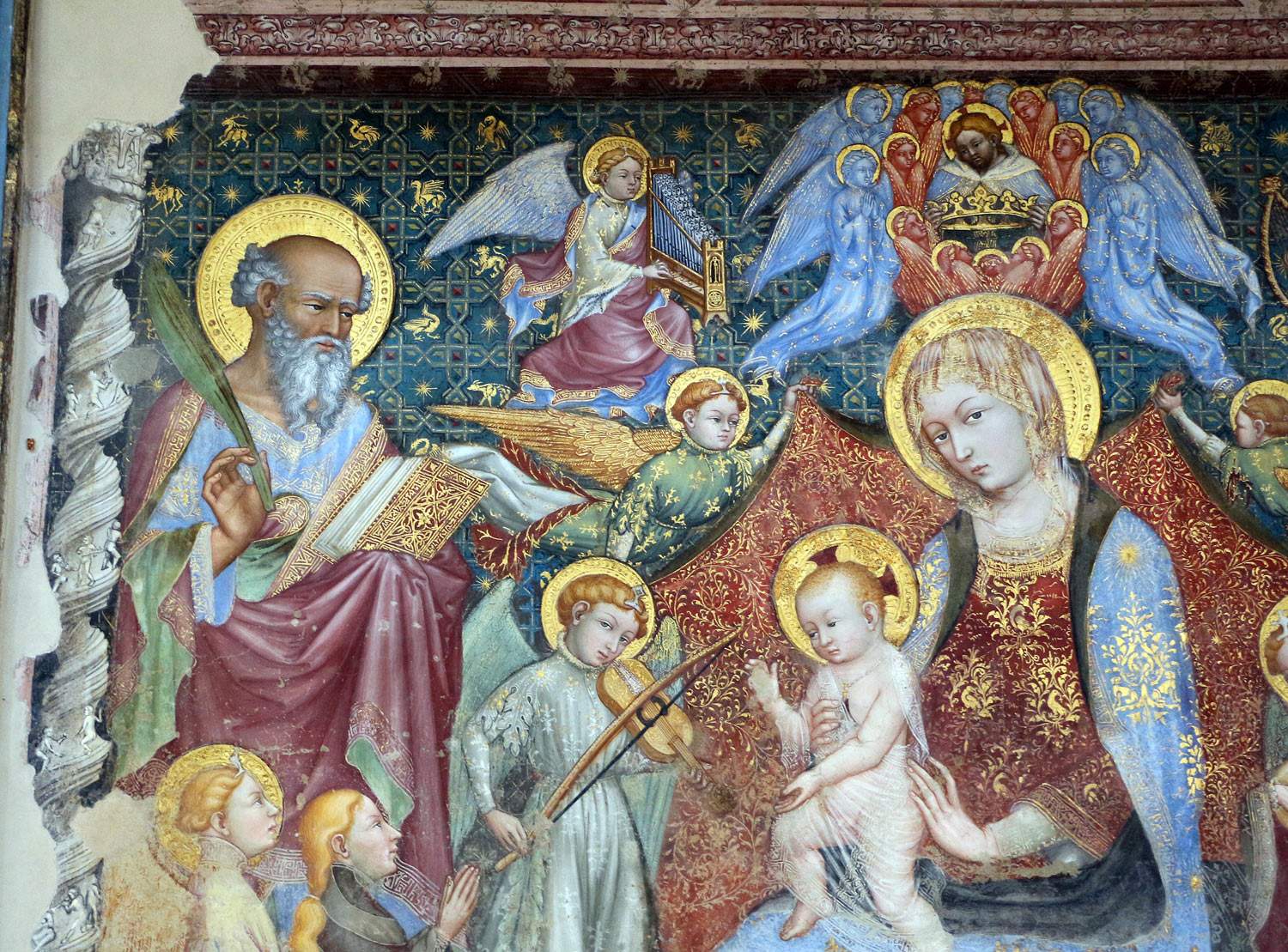
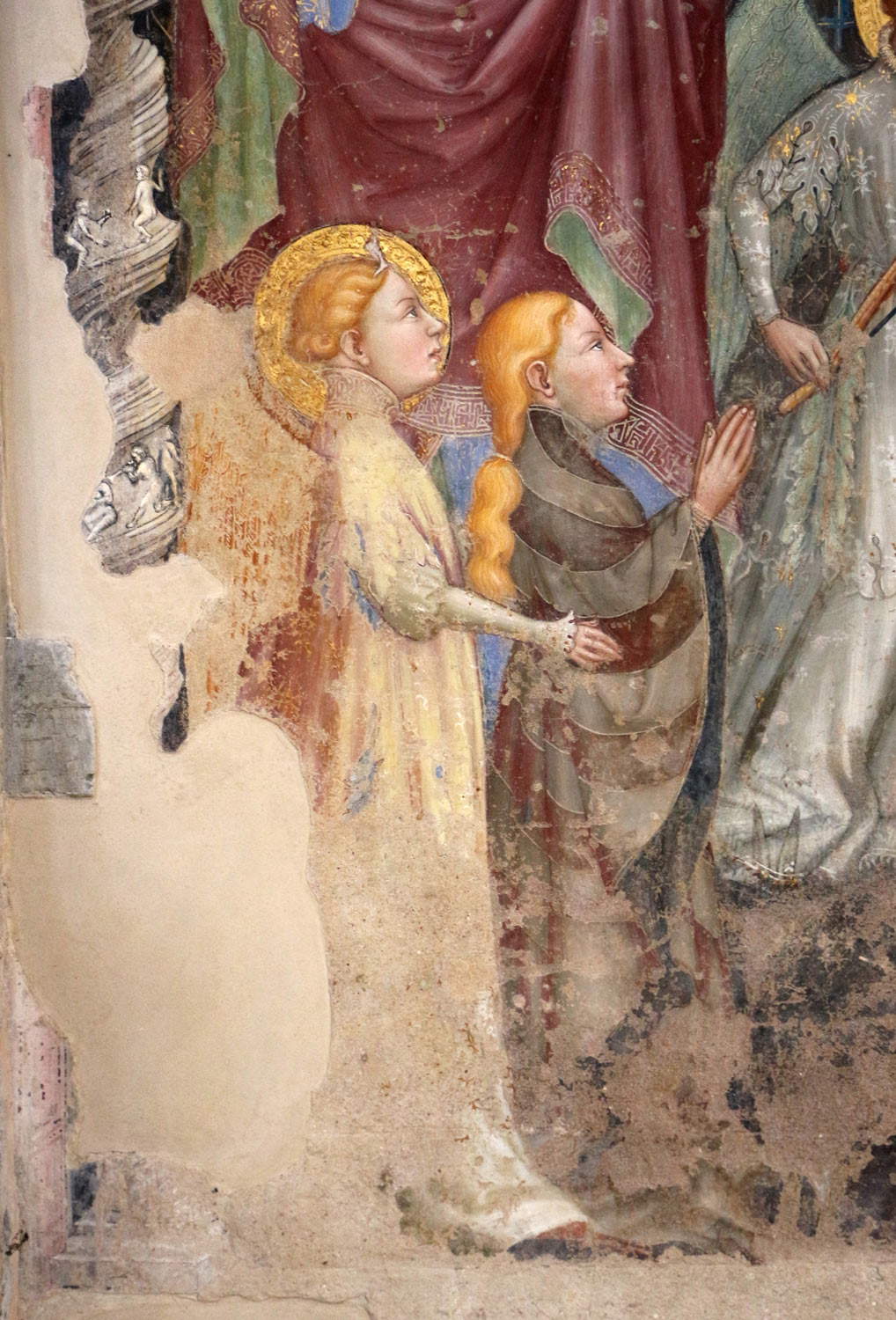
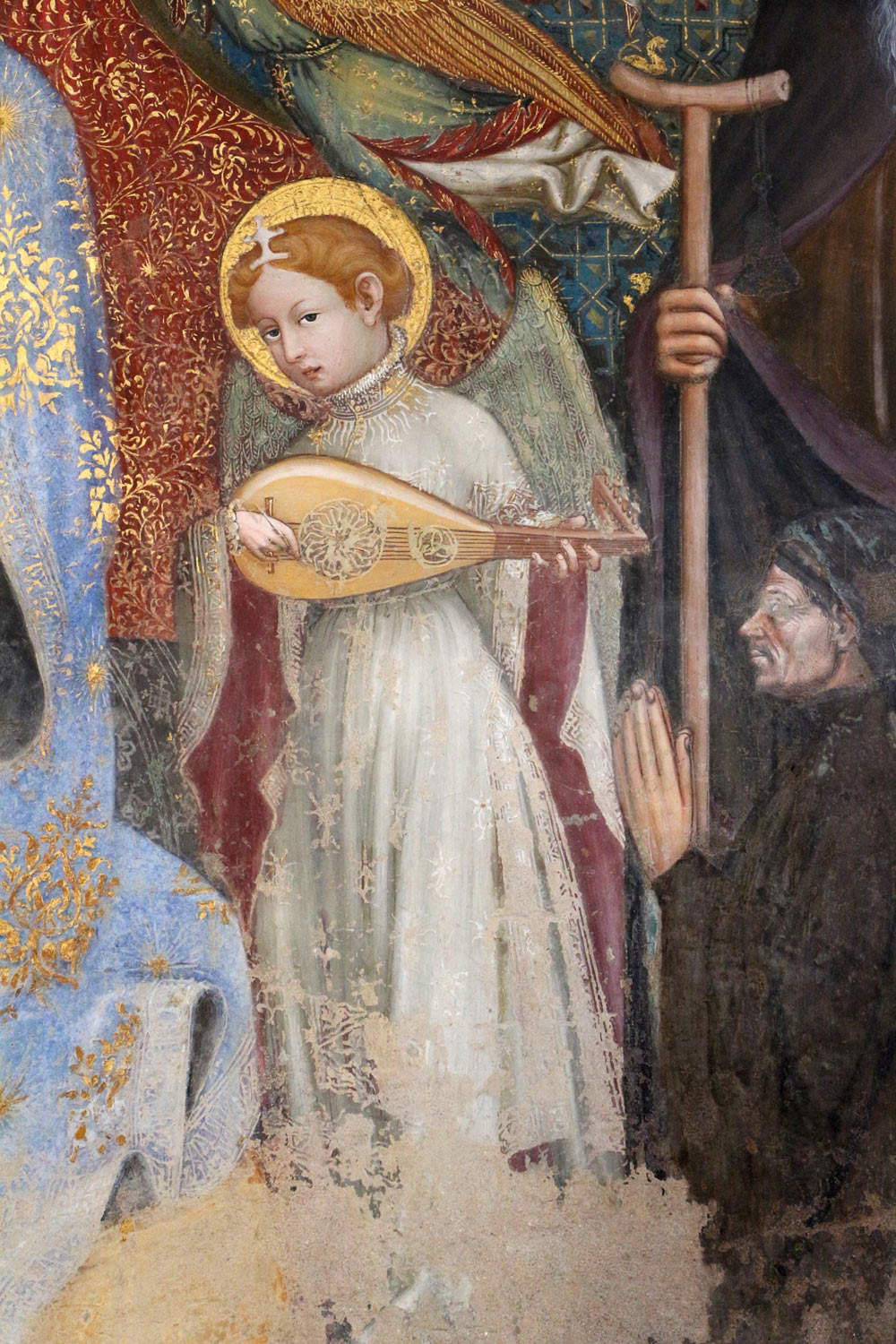
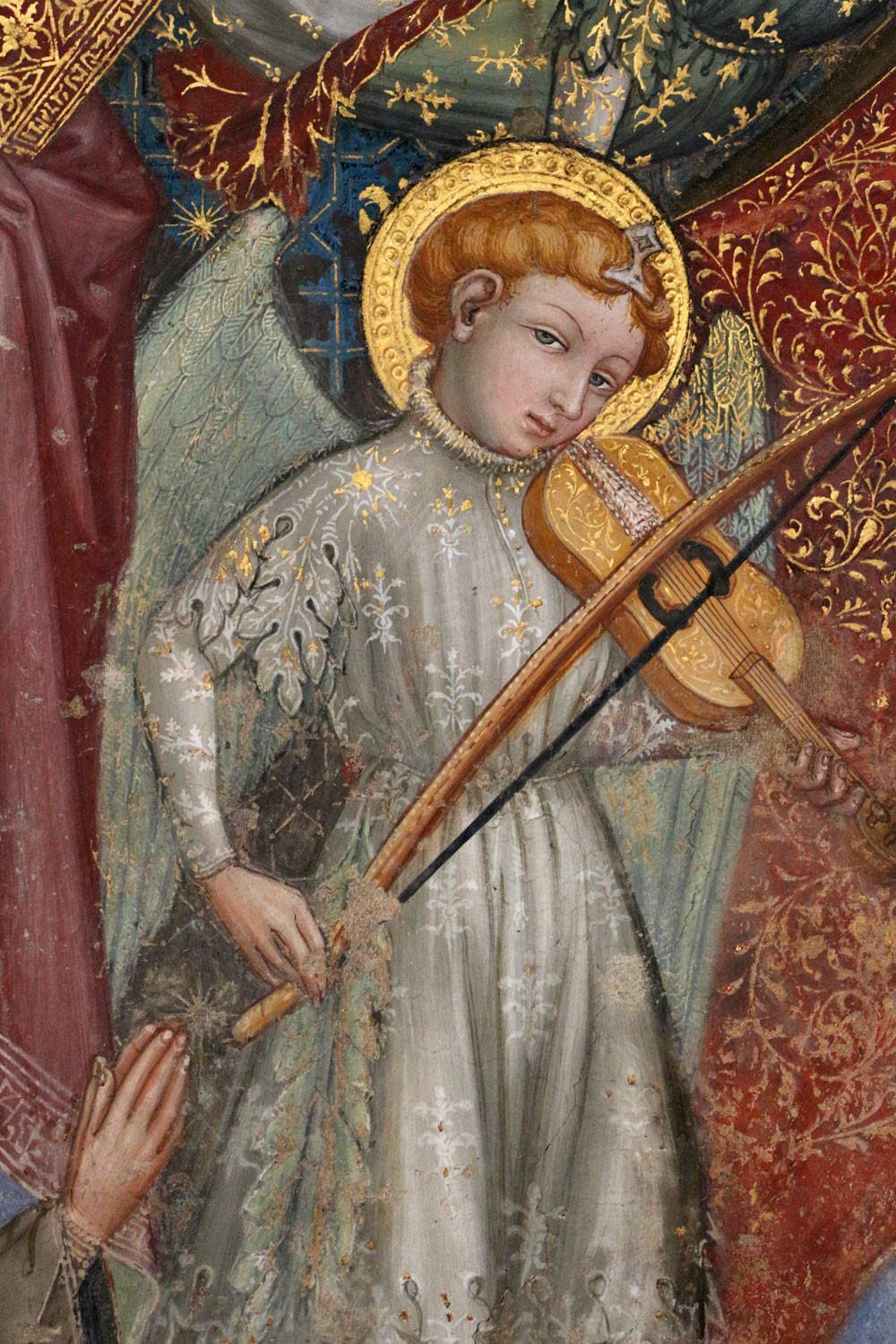
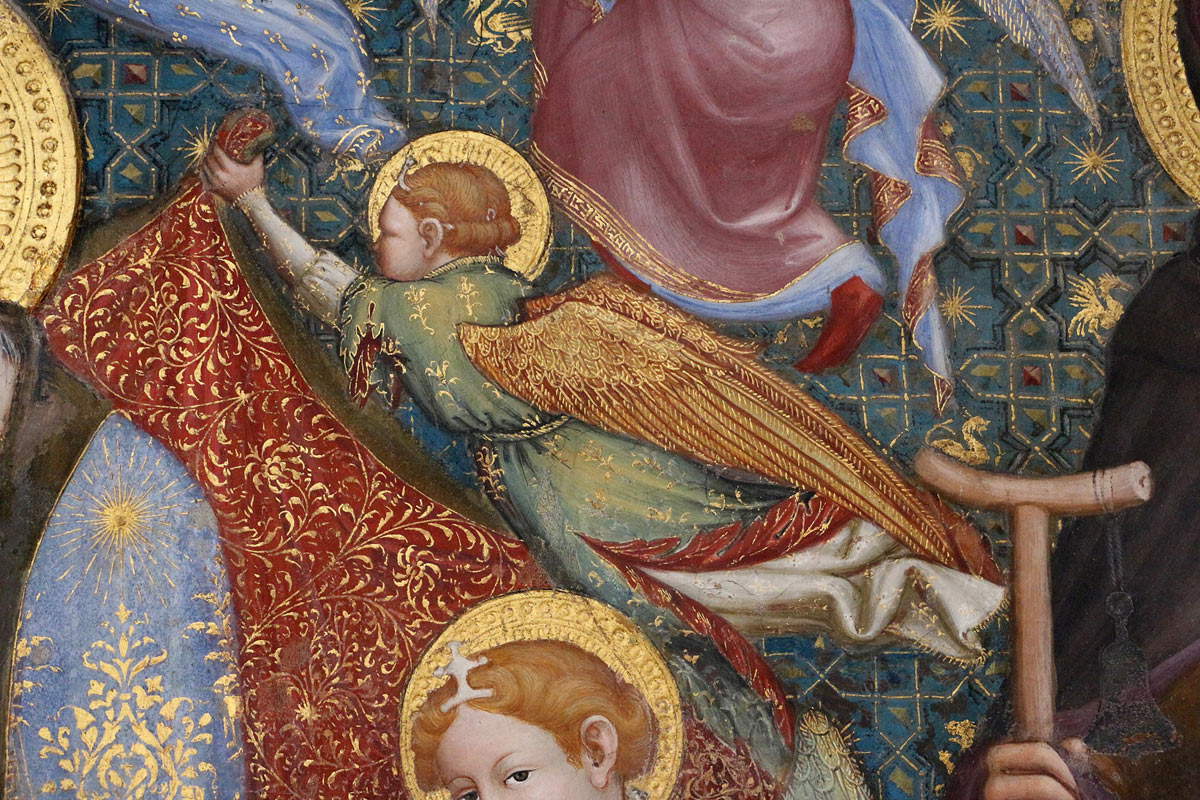
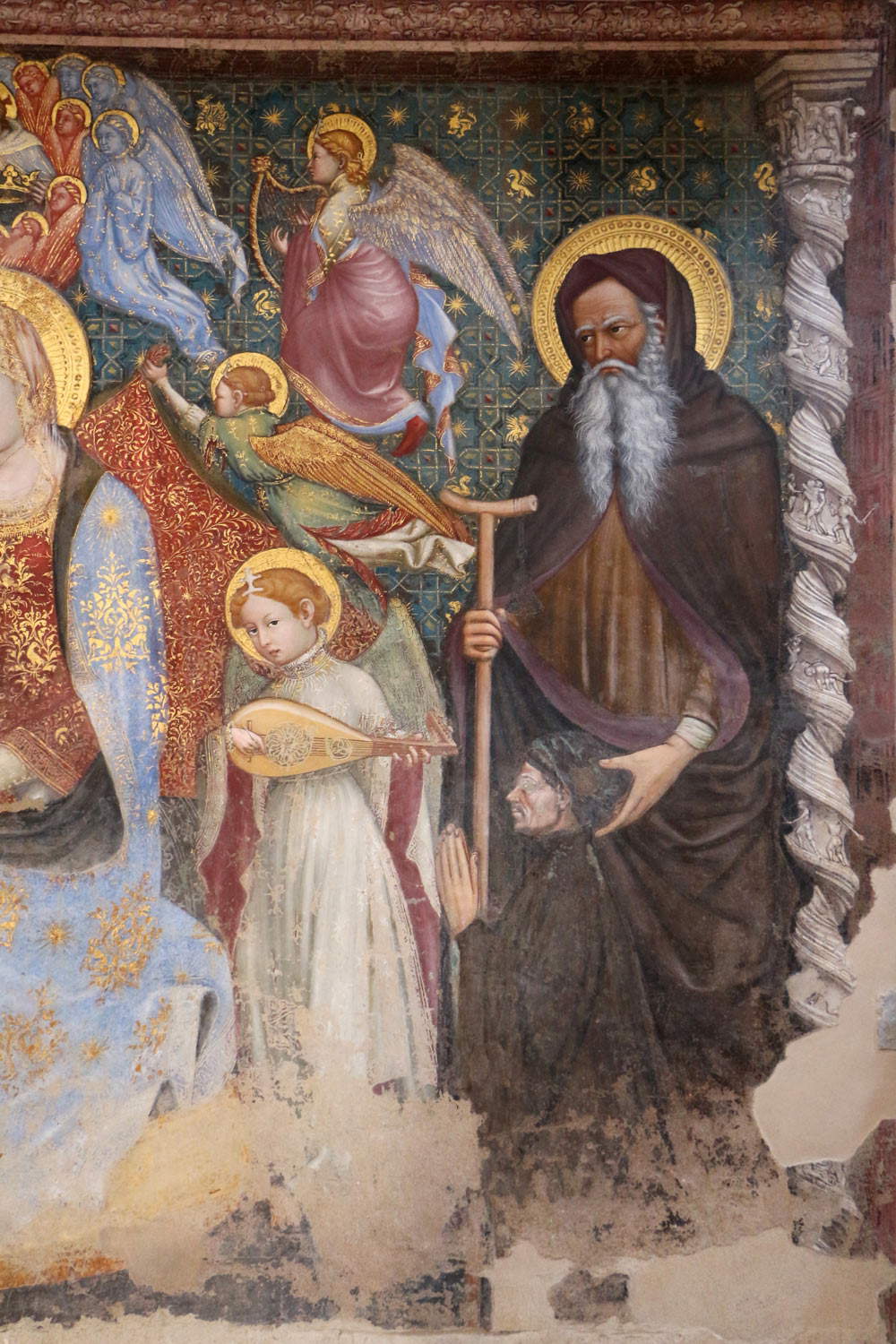
The painting depicts the Virgin and Child according to the iconography of the Madonna of Humility, a subject that had great fortune from the second half of the 14th century: the Madonna is shown seated on a cushion above a flowery meadow. On her lap is the Child standing, supported by the hands of his mother. The Child is in a blessing attitude and turns his gaze toward a young woman in prayer who is presented before the Virgin by her guardian angel and St. John the Evangelist. On the opposite side is Saint Anthony the Abbot who presents another figure to the Virgin, kneeling and dressed in black. A number of musician angels are depicted: two on either side of the throne, engaged in playing a viella and a ribeca, while two others, playing an organ and a psaltery, are on the upper part. The latter are placed to the right and left of the glory of seraphim and cherubim that frames the figure of God the Father, who is holding up the crown to be placed on the Virgin’s head, so as to elect her queen of heaven. Behind the Virgin, two other angels hold a red cloth with gold decorations, which echoes the fabric of Mary’s robe, thus making the space more solemn in the absence of the throne. The scene is contained within two historiated twisted columns, which came to light following restoration in 1879. On the surface of these painted architectural elements, the elect during the Last Judgment have been recognized on the left, and the damned on the right.
The intention in this work is to recreate the preciousness of an altarpiece, but a different direction is taken than the choices of the time, which involved polyptychs with Gothic forms. This painting was connected to a burial and had the function pro remedio animae, that is, it was made to benefit the soul of the deceased on its journey to the Afterlife. In this case, it was a female burial: the deceased, in fact, has been recognized in the woman kneeling at the side of the Virgin, while the man on the opposite side is the commissioner, whose name we can also know today. Only in recent times, in fact, was it possible to read the oldest inscription in this painting, which had been made on the entablature resting on the twisted columns. It was the subject of in-depth study on the occasion of the aforementioned exhibition on Ottaviano Nelli: on this occasion, in fact, a photogrammatic survey and ultraviolet fluorescence filming was commissioned in order to deepen our understanding of it. What has been returned is information about some of the people directly involved in the story of this fresco. Indeed, it is possible to identify the name of the patron, Antonio di Mucciolo Angelucci, who was a dyer by trade, and the name of a friar, Amato, who probably officiated at this altar or even the entire church.
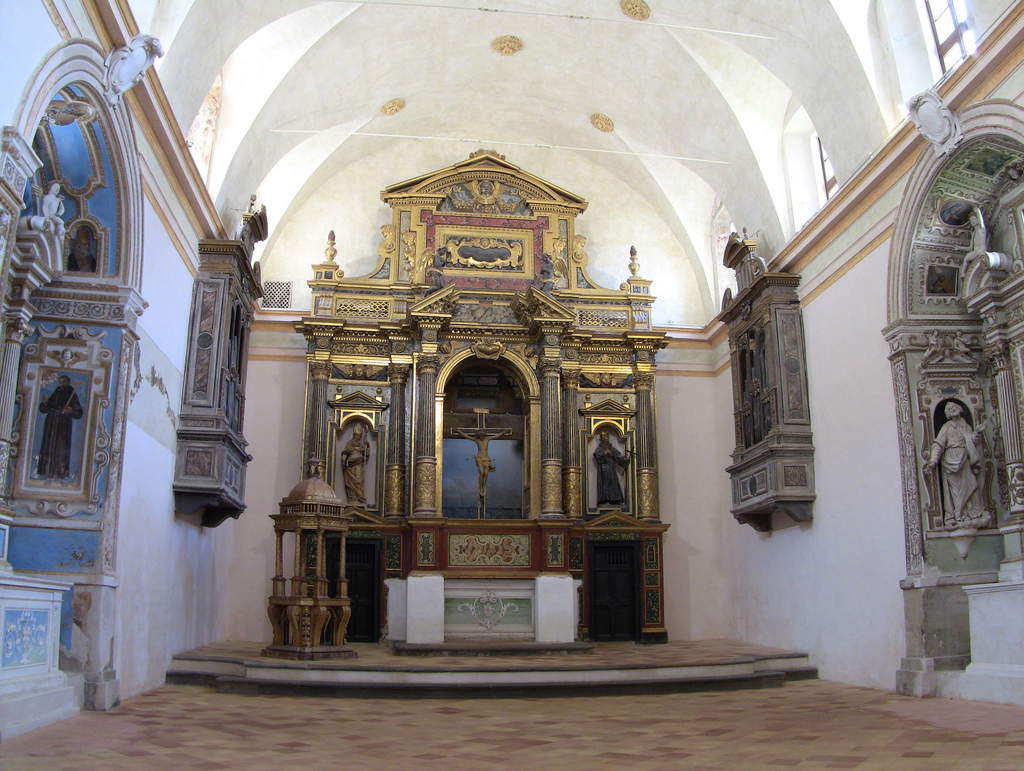

The front structure with classical forms was inserted at a later period, in 1510, giving the painting a fully Renaissance flavor, updated to the taste of the time. On it was made the Marian invocation “AVE REGINA COELORUM/AETERNUM PATENS MISERIS ASILUM/MCCCCCX.” The inscription in which one can read the name of Ottaviano Nelli and the date the work was made is also sixteenth-century: it is possible that it was made in the same intervention with which the stone aedicule was placed.
In an inventory of 1728, the altar in the vicinity of this work was recorded with the title Madonna Santissima della Ferrata. At that time there was a carved and gilded wooden frame around the painting. The heads of the Virgin and Child were accompanied by silver crowns, which were later stolen in 1823. Two wooden angels holding votive lamps were also reported. The chronicle of the 1804 pastoral visitation also describes the presence of a silver and stone jewelry around the Virgin’s neck.
Beginning in the mid-18th century, the Madonna of the Belvedere was considered Ottaviano Nelli’s masterpiece, and over the next century it became one of the most admired Umbrian paintings: the Romantic writers idealized it, because of the Virgin’s grace and elegance. The fame of this work contributed decisively to the re-emergence of the figure of Ottaviano Nelli in artistic historiography. In 1841 the first monograph on Ottaviano Nelli by Luigi Bonfatti was published, and two years later, in 1843, Memorie storiche di Ottaviano Nelli pittore eugubino. The scholar from Gubbio devoted his studies to the rediscovery and appreciation of this painter (the first monograph dedicated to Ottaviano Nelli in 1841 is his) and was an important figure because of his relations with some of the leading scholars of his time who also dealt with Gubbio painting in their work. Prominent among them is the name of Giovan Battista Cavalcaselle, who played a significant role in the 19th-century restoration of the work. Bonfatti and Cavalcaselle became friends and correspondents: from their private correspondence one can glean not only artistic considerations about this work but also data and comments regarding the situation of the restoration work.
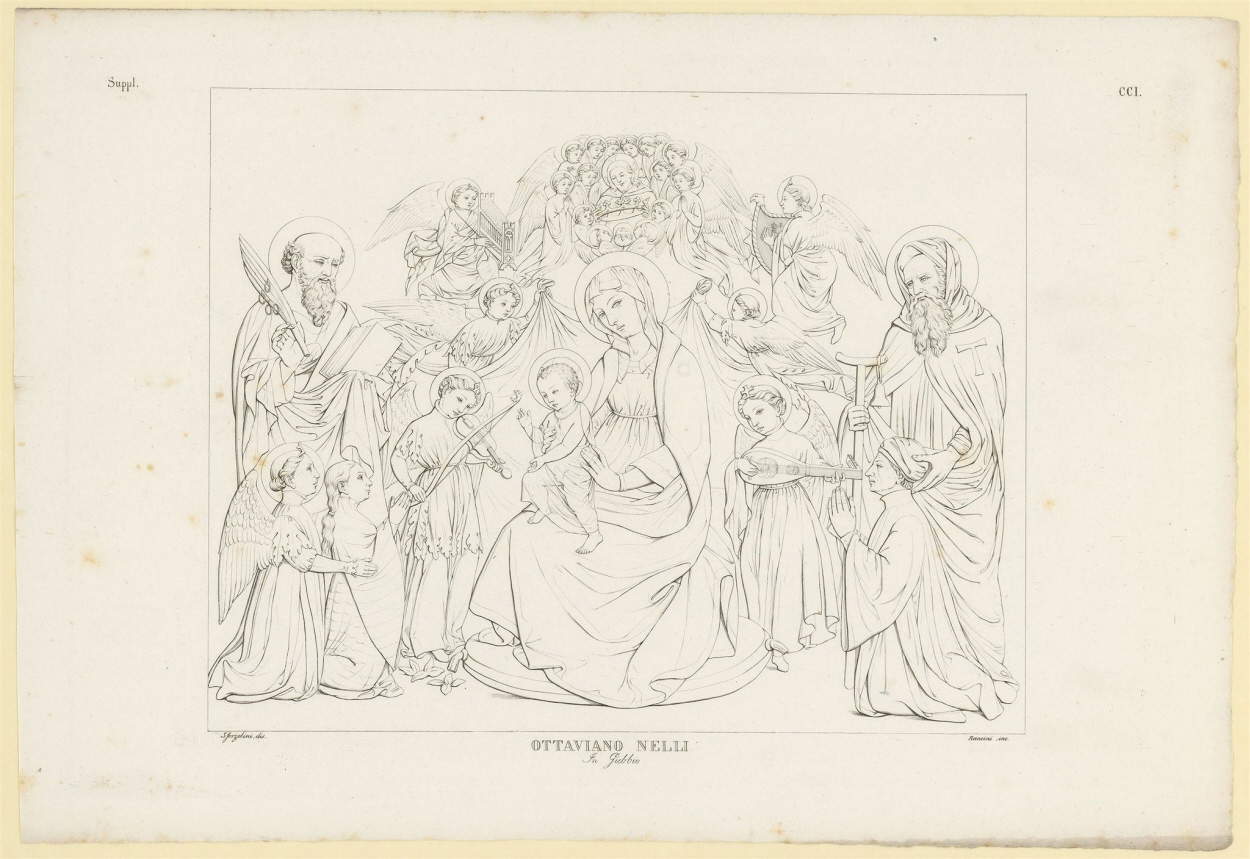
There are several 19th-century reproductions of this work, valuable evidence for reconstructing its history. One of these was executed by the painter Domenico Sforzolini (Rome, 1810 - 1860) and was published in the Storia della Pittura italiana esposta coi monumenti italiani by Giovanni Rosini (Lucignano, 1776 - Pisa, 1855), who personally praised this fresco. Interest in this painting was therefore very high. In 1857 a paper was given to the press, for the Arundel Society, by Austen Henry Layard entitled The Madonna and Saints painted in fresco by Ottaviano Nelli in the Church of Santa Maria Nuova at Gubbio, containing a chromolithograph made by the English artist Anne-Margaretta Burr (Poltair, 1817 - Venice, 1892), which together with the engraving published by Rosini, turns out to be an important iconographic source for having a record of the painting before restoration. The English-language writing undoubtedly contributed to increasing the fame of both the work and Ottaviano Nelli even beyond (future) national borders. In addition to its importance from the artistic point of view, its fame also grew from the devotional point of view: this encouraged the creation of some copies on private commission. This is the case of the painted copy on panel whose execution was commissioned to the painter Augusto Guglielmo Stoppoloni (San Severino Marche, 1855 - Gubbio, 1936) by Cardinal Ludovic-Frédéric de Falloux du Coudray. The panel, preserved today in the Vatican, retains the same dimensions as the original on the wall. The same painter also made some smaller paintings in which he portrayed only the detail of the Virgin’s head. The chronology of this work is still problematic in part. The date given in the sixteenth-century inscription is illegible: the most convincing chronology is that which emerges from stylistic comparison with some of Nelli’s works and which would indicate a date of 1403.
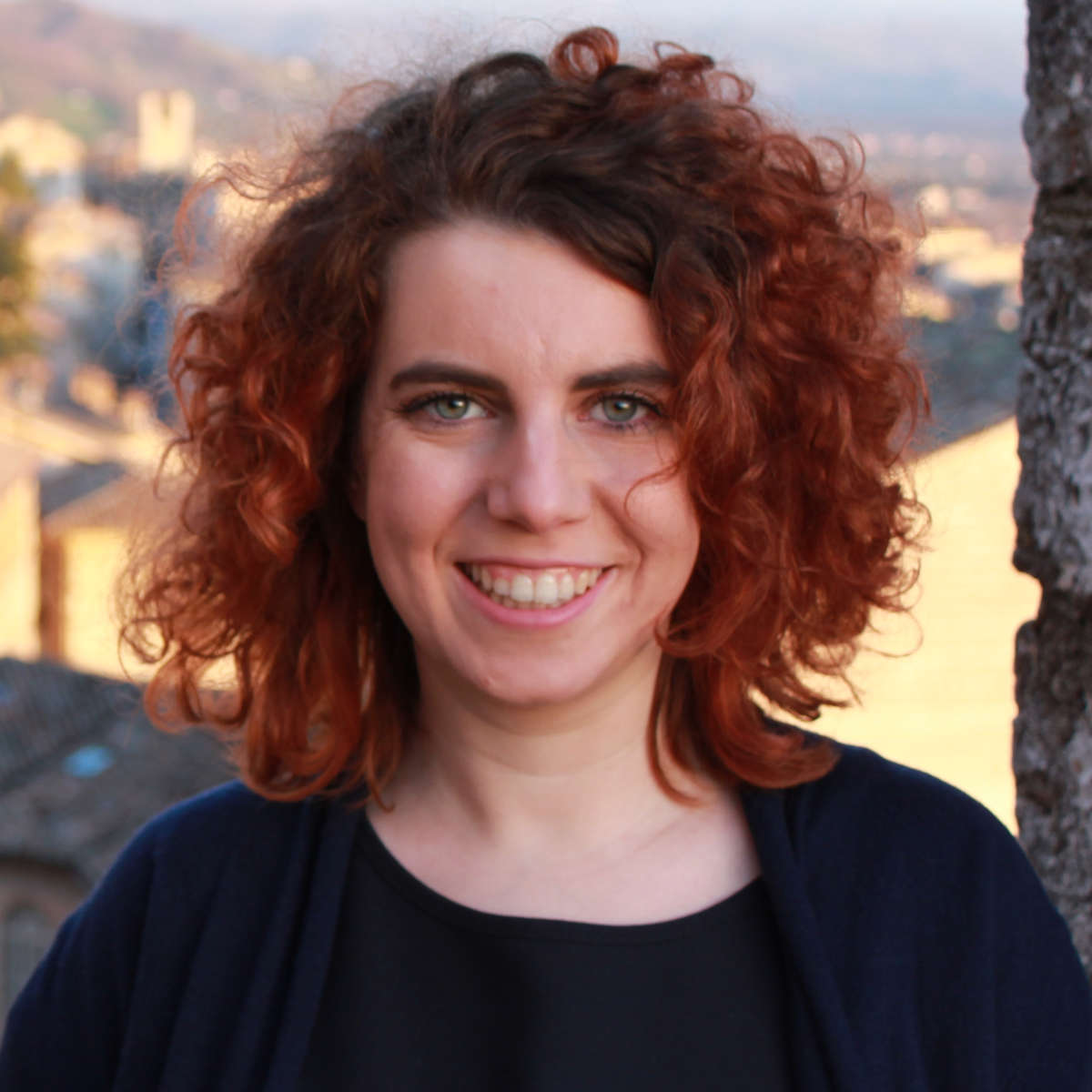
The author of this article: Francesca Interguglielmi
Storica dell'arte, laureata in Arte Medievale presso l'Università degli Studi di Siena. Attualmente si sta formando in didattica museale presso l'Università degli Studi Roma Tre.Warning: the translation into English of the original Italian article was created using automatic tools. We undertake to review all articles, but we do not guarantee the total absence of inaccuracies in the translation due to the program. You can find the original by clicking on the ITA button. If you find any mistake,please contact us.